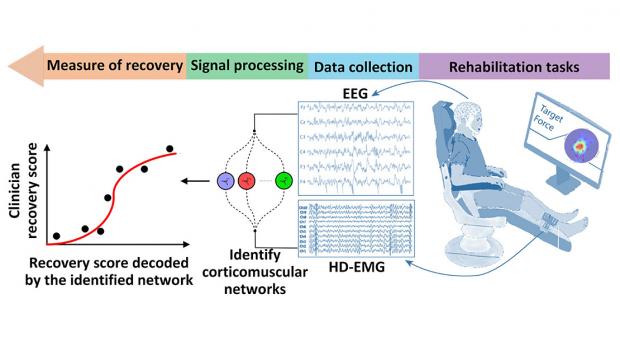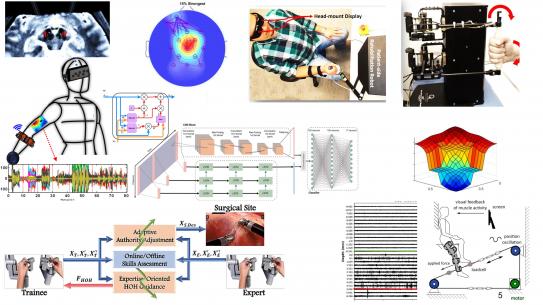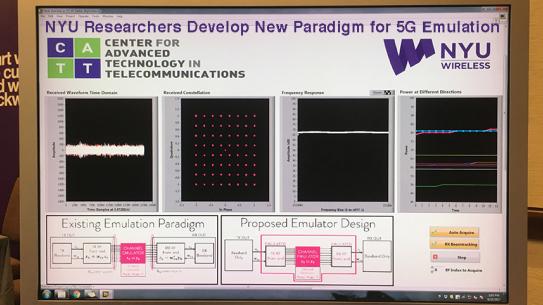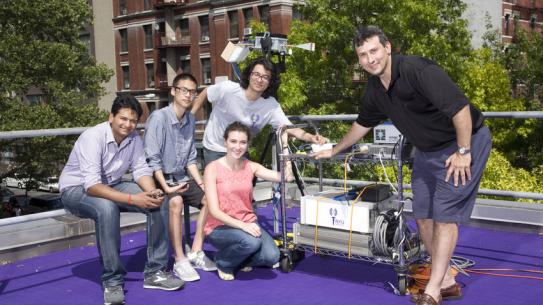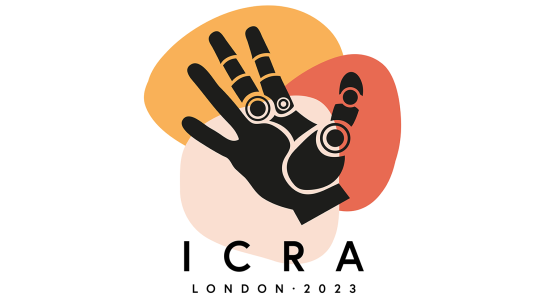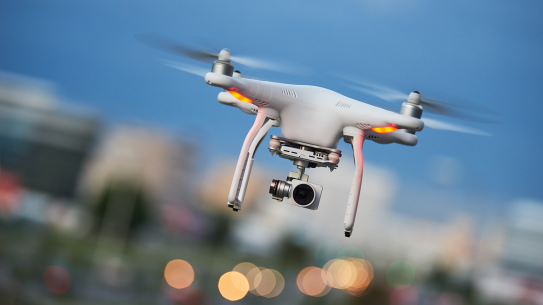S. Farokh Atashzar
,
Ph.D.
-
Assistant Professor
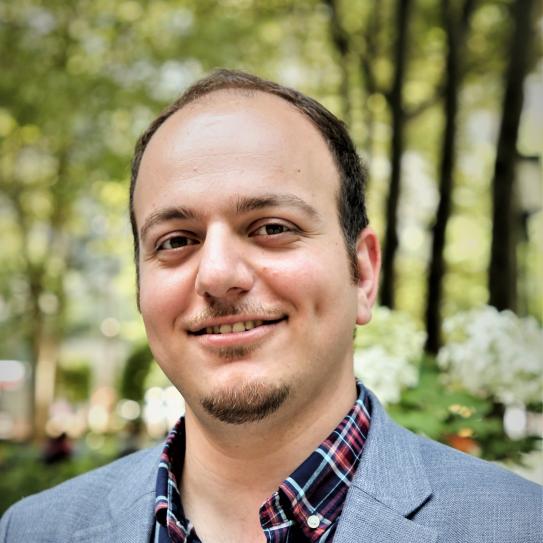
S. Farokh Atashzar is an Assistant Professor of Electrical and Computer Engineering, as well as Mechanical and Aerospace Engineering at New York University (NYU). Prior to joining NYU, Atashzar was a senior postdoctoral scientist in the Department of Bioengineering, Imperial College London, UK, sponsored by Natural Sciences and Engineering Research Council (NSERC) of Canada. From February 2017 to August 2018, he served as a postdoctoral research associate at Canadian Surgical Technologies and Advanced Robotics (CSTAR) center. From 2015 to 2018, he conducted research for the Network of Centres of Excellence (NCE) of Canada program “Aging Gracefully across Environments using Technology to Support Wellness, Engagement and Long Life (AGE-WELL)". In 2014, he was a visiting research scholar at the Biorobotic Systems lab, University of Alberta, Canada. His many awards include the highly-competitive Ontario Graduate Scholarship (OGS) in 2013 and an NSERC Post-Doctoral Fellowship (PDF) in 2018. He was ranked among the top "5" applicants in Canada for the 2018 NSERC PDF competition in the Electrical and Computer Engineering sector.
MERIIT Lab:
Atashzar leads the Medical Robotics and Interactive Intelligent Technologies (MERIIT) Laboratory, at NYU. The mission of the MERIIT Lab is to develop and implement artificial intelligence, advanced control systems, signal processing algorithms, smart wearable mechatronic modules, and transparent human-robot interaction systems to augment human capabilities using multimodal robotic technologies. A particular focus of the lab is on interactive Neuro-Rehabilitation Robotic and Surgical Robotic systems. The lab hosts state-of-the-art human-machine interface technologies to exploit bidirectional interactions that allow humans to overcome natural, physiological, and pathological barriers.
Editorial Services, Symposia, and Workshops:
Atashzar has served as the lead guest editor for two special issues: (i) “Intelligent Human-Robot Interaction for Rehabilitation and Physical Assistance,” in IEEE Robotics and Automation Letters, and (ii) Autonomy and Intelligence in Neurorehabilitation Robotic and Prosthetic Technologies," in the Journal of Medical Robotics Research. He is the publication co-chair of the 2020 International Symposium on Medical Robotics (ISMR), Georgia Institute of Technology, Atlanta, USA. Atashzar is a general chair of the Symposium on “Advanced Bio-Signal Processing and Machine Learning for Assistive and Neuro-Rehabilitation Systems” at the 2019 IEEE Global Conference on Signal and Information Processing (GlobalSIP2019). He was also a general chair for the symposium at GlobalSIP 2018, and a technical chair for the symposium at GlobalSIP 2017. He has served as the lead organizer for several workshops, including the workshop on "Sensorimotor Augmentation in NeuroRehabilitation Robotic and Prosthetic Technologies" at ISMR2019, and the workshop on "Autonomy and Intelligence in Robotic Rehabilitation and Assistive Technologies", at RehabWeek2019, Canada, and the workshop on “Physical Human-robot and Human-telerobot Interaction: From Theory to Application for Neuro-rehabilitation,” 2017 IEEE/RSJ International Conference on Intelligent Robots and Systems (IROS), Canada.
His research is supported by US National Science Foundation (NSF), NYU WIRELESS, and several industrial awards, including a major equipment donation by Intuitive Foundation.
Research News
EyeScore: Predicting stroke reoccurrence through retinal scans
One in six deaths from cardiovascular disease is due to stroke. Caused by a blood clot in the brain, a stroke can have severe consequences, even minutes after initially occurring. That is what makes prevention so important.
Now, thanks to NYU researchers, including a collaborative effort between NYU Assistant Professor S. Farokh Atashzar, and NYUAD Assistant Professor Farah Shamout, early monitoring may soon be available at an unlikely location: your eye doctor.
Their project, called EyeScore, is developing a technology that uses non-invasive scans of the retina to predict the recurrence of stroke in patients. They use optical coherence tomography — a scan of the back of the retina — and track changes over time. The retina, attached directly to the brain through the optic nerve, can be used as an indicator for changes in the brain itself.
Atashzar and Shamout are currently formulating their hybrid AI model, pinpointing the exact changes that can predict a stroke and recurrence of strokes. The outcome will be able to analyze these images and flag potentially troublesome developments. And since the scans are already in use in optometrist offices, this life-saving technology could be in the hands of medical professionals sooner than expected.
Collaborative Research: Modeling and Control of Non-Passive Networks with Distributed Time-Delays: Application in Epidemic Control
S. Farokh Atashzar, assistant professor of electrical and computer engineering at NYU Tandon and member of the Center for Urban Science and Progress (CUSP), has received a major NSF award (~$400K) to conduct fundamental research on the control of networked dynamic systems in the presence of distributed delays.
The COVID pandemic, an example of large-scale disease propagation, can be seen as a "mega-network" where complex interactions and distributed delays in the interconnections lead to hard-to-predict, echoing “waves” of disease spread. S. Farokh Atashzar, with the support of a collaborative National Science Foundation Civil, Mechanical and Manufacturing Innovation (NSF CMMI) grant, and in collaboration with Northeastern University, will dive into these "waves" by developing novel approaches to computational network modeling and designing optimal mitigation control to minimize the spread.
This research seeks to develop a comprehensive framework for data-driven control of large-scale networks where time delays and complex behavior play an important role. In the COVID pandemic, such effects lead to ``reflective" spreading waves, resulting in hard to predict and control phases of infection spread. But accurate network models of society and disease spread are necessary to enhancing pandemic preparedness and making healthcare systems and governments ready to respond well to potential future airborne epidemic diseases.
Effective mitigation of pandemics spread over networks requires: (a) unveiling the topology, dynamics, and delays of the underlying network from experimental data; (b) using this information to design networks that can robustly minimize the systemic effects of localized infection foci; and (c) synthesizing real-time optimal control laws that adjust local parameters to prevent the onset of delay-induced echoing waves of pandemic spread. This research seeks to achieve these objectives by embedding the problem into a more general one: data-driven control synthesis, based on nonlinear passivity control theory, for networked systems in the presence of delay-induced non-minimum phase/non-passive behavior.
Atashzar is also with NYU Center for Urban Science and Progress (CUSP). The project will promote health-related engineering science, research, and education for students from NYU CUSP and NYU Tandon.
Brain-Muscle Connectivity Network for Assessing Stroke NeuroRehabilitation
This project is led by S. Farokh Atashzar, assistant professor of electrical and computer engineering at NYU Tandon; and John-Ross Rizzo, assistant professor in the Departments of Rehabilitation Medicine and Neurology at NYU Langone Health, and of mechanical and aerospace and biomedical engineering at NYU Tandon.
Stroke, the leading cause of motor disabilities, is putting tremendous pressure on healthcare infrastructures because of an imbalance between an aging society and available neurorehabilitation resources. Thus, there has been a surge in the production of novel rehabilitative technologies for accelerating recovery. Despite the successful development of such devices, lack of objective standards besides clinical investigations using subjective measures have led to controversial recommendations regarding several devices, including robots.
This NSF/FDA Scholar-in-Residence project, designed to address the need for effective rehabilitative technologies, is focused on the design, implementation, and evaluation of a novel, objective, and robust algorithmic biomarker of recovery. Called Delta CorticoMuscular Information-based Connectivity (D-CMiC), the proposed algorithm-based protocol quantifies the connectivity between the central nervous system (CNS) and the peripheral nervous system (PNS) by simultaneously measuring electrical activity from the brain and an ankle muscle on the affected side of recovering post-stroke patients. The system will quantify both spectrotemporal neurophysiological connectivity between the CNS (using electroencephalography (EEG) and PNS (using high-density surface electromyography (HD-sEMG).
The goal of the collaborative project, beyond clarifying the neurophysiology of recovery, is to expedite availability of more effective rehabilitation devices to patients for a range of neurological disorders beyond stroke (such as Parkinson's disease, Essential Tremor and Ataxia). For educational impact, the project will generate a unique transdisciplinary educational environment by conducting workshops about emerging Brain-Computer Interface (BCI) technologies in medicine, and undergraduate team projects for human-machine interfacing, with a focus on promoting STEM activities within underrepresented groups.
The predictive capability, precision, and efficiency of the developed D-CMiC metric will be analyzed by collecting data from recovering stroke patients and healthy subjects alike. Unique D-CMiC features include: (1) accurately and objectively tracking corticomuscular functional connectivity in the Delta/low frequency band; (2) computationally modeling of corticomuscular connectivity; (3) building the basis for the first medical device development tool for the systematic, objective, and transparent evaluation of pre-market rehabilitation devices, aligned with the FDA's mission.



